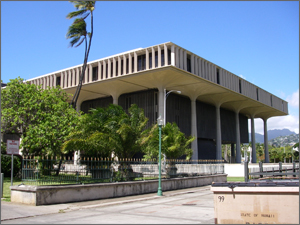|
Housing in Hawaii: Making Kauhale Affordable
Working AND Living in a Colorado Resort Town
Converting Stalled Developments Into Affordable Housing in New York City
The state of Hawaii is one of the most popular vacation destinations in our nation. While tourism plays a major part in the state's economy, it's also cited as one of the main reasons for a high cost of living and housing. Homes, or Kauhale in the native language, remain unaffordable for many full-time residents. Census data reveals that, from 2000 to 2008, median home prices in the state more than doubled from $272,700 to $548,700 respectively. In 2008, 46.8 percent of homeowners in the state were paying over 30 percent of their income toward housing costs, a figure above the national average of 37.3 percent of homeowners whose monthly housing costs exceed the 30-percent-of-income threshold. In this article, we take a brief look at Hawaii's response to increasing housing affordability for its residents.
Affordable Housing Regulatory Barriers Task Force
 In 2007, Hawaii Governor Linda Lingle established the Affordable Housing Regulatory Barriers Task Force to identify existing regulatory impediments and provide solutions to eliminate or minimize any such barriers to affordable housing development. The task force, comprised of representatives from the state and county government, business leaders, developers, architects, and nonprofit service providers, submitted its findings and recommendations to the state legislature in 2009. Presented below are some of the legislative initiatives stemming from these recommendations. In 2007, Hawaii Governor Linda Lingle established the Affordable Housing Regulatory Barriers Task Force to identify existing regulatory impediments and provide solutions to eliminate or minimize any such barriers to affordable housing development. The task force, comprised of representatives from the state and county government, business leaders, developers, architects, and nonprofit service providers, submitted its findings and recommendations to the state legislature in 2009. Presented below are some of the legislative initiatives stemming from these recommendations.
Expand Eligibility for Exemptions and Expedited Review
A current statute in Hawaii, Section 201H-38, exempts residential projects from some zoning and land use requirements to encourage more rapid and increased affordable housing production. To be eligible for this exemption, at least half of the project’s housing units must be set aside for low-income households. Preliminary evidence demonstrates that providing this incentive is having a positive impact on affordable housing development. However, the task force strongly recommended expanding the requirement to encourage more set asides for affordable units. These changes are set to take place if pending legislation, State Bill 901, is approved by the General Assembly. If the bill passes, projects not previously eligible for the exemption, including mixed-use projects and infrastructure projects associated with housing, would now qualify. According to the bill, at least 20 percent of the residential units within a mixed-use project must be affordable to households with incomes at or below 140 percent of the median income.
Reduce Permitting Delays
Hawaii currently has a process in place to fast-track affordable housing project proposals but does not have a similarly accelerated process for the next step in development: obtaining building permits. To reduce lengthy processing times, the task force recommended establishing a time limit for permit approvals. State Bill 902 was introduced in 2009 to accomplish this task and is currently pending before the 2010 State Legislature. The bill requires state and county agencies to approve any ministerial permits (nondiscretionary permits that require issuance from an administrator if the applicant meets certain criteria) within 45 days.
Affordable Housing Receiving Zones
Another task force recommendation involves creating affordable housing receiving zones. To promote affordable housing development, counties will identify proposed growth areas in their general plans and designate these areas as "receiving zones." Affordable housing projects in the receiving zones will be eligible for incentives, such as reduction or waiver of various permit and development fees, reduced parking requirements, priority permit review, design flexibility, site flexibility, and density bonuses. Legislation authorizing counties to establish affordable housing receiving zones — State Bill 908 — is being considered by the state legislature. The proposed bill would allow a housing project of 15 or more units located within an approved receiving zone to be eligible for developer incentives if at least 20 percent of the units are affordable to low- and moderate-income households earning no more than 140 percent of the area median income.
Conclusion
Hawaii has made significant strides toward identifying and overcoming regulatory barriers to affordable housing development. One such step was to establish the Affordable Housing Regulatory Barriers Task Force, which is proving to be a force for policy change in the state. Some of the task force recommendations have already made the shift to policy and legislative initiatives. Governor Lingle's timely response in the creation of the task force, the group's efforts that translated into policy recommendations, and the legislative body's quick response to these suggestions is a model for other states to follow in making Kauhale affordable and accessible to all.
Next Search Archive
|


